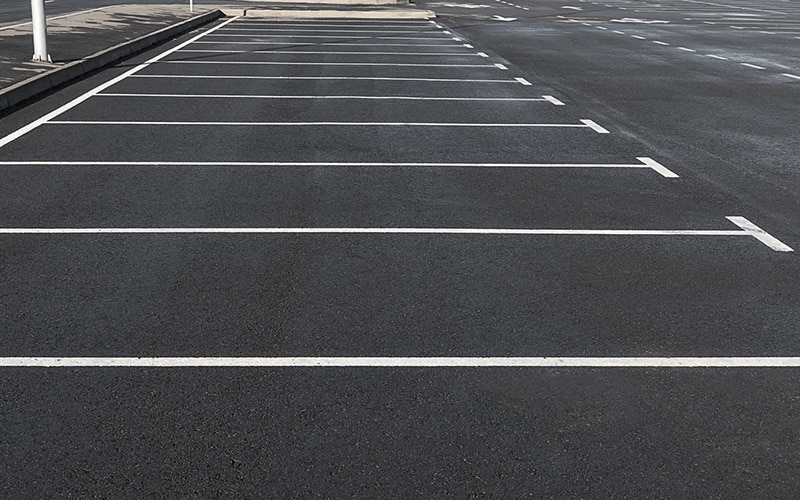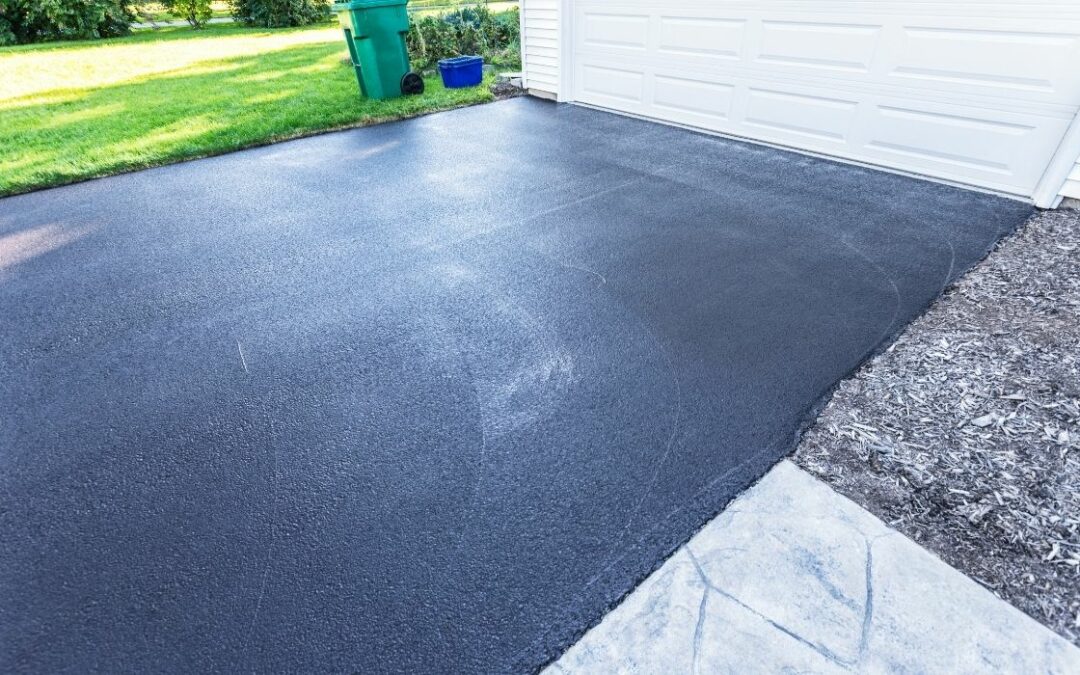Maximize Investment Returns: Angled Parking Area Excellence with Asphalt Sealing
Wiki Article
Hot Mix Asphalt: A Lasting Solution for Sidewalk
Warm Mix Asphalt (HMA) has emerged as a leading lasting option for sidewalk remedies, supplying a myriad of innovative technologies and environmental advantages. Its capacity to recycle products and decrease power intake offers an engaging case for its adoption in roadway construction tasks. The long-term performance and toughness of HMA make it a preferred choice for infrastructure advancement. As the demand for green building and construction methods expands, exploring the subtleties of HMA's sustainability can give valuable understandings right into the future of sidewalk remedies.Ecological Advantages of Warm Mix Asphalt
:max_bytes(150000):strip_icc()/barricade-tape-sealed-driveway-big-56a583145f9b58b7d0dd3d87.jpg)
Moreover, Warm Mix Asphalt assists to reduce metropolitan warm island effects. Its dark shade soaks up sunlight, minimizing the amount of warmth showed back into the environment contrasted to lighter-colored sidewalks. This can decrease ambient temperatures in metropolitan locations, decreasing the need for a/c and eventually reducing power usage.
Furthermore, Warm Mix Asphalt adds to enhanced stormwater monitoring. Its porous nature permits water to penetrate the sidewalk and charge groundwater supplies, reducing overflow and the threat of flooding. These ecological benefits make Warm Mix Asphalt a lasting selection for paving highways and roadways.
Power Efficiency in HMA Manufacturing
Is energy efficiency a crucial factor in the manufacturing of Warm Mix Asphalt (HMA)? Power plays a significant function in the production of HMA, influencing both expense and ecological sustainability. One vital facet of energy performance in HMA manufacturing is the use of warm mix asphalt (WMA) modern technologies.Moreover, innovations in plant modern technologies have caused even more energy-efficient HMA production processes. Modern plants are developed with features like recycled asphalt sidewalk (RAP) handling abilities, reliable burner systems, and enhanced insulation, all adding to energy cost savings. By optimizing power usage in HMA manufacturing, the sector can reduce its carbon impact while preserving top notch pavement products. Energy performance is, consequently, a critical consideration in making certain the sustainability of Warm Mix Asphalt production.
Recyclability of Warm Mix Asphalt
The recyclability of Warm Mix Asphalt (HMA) is a critical facet of its sustainability and long-lasting ecological influence. HMA is one of one of the most recycled materials in the United States, with over 100 million lots of recovered asphalt sidewalk (RAP) being reused each year in brand-new pavement building and construction. Reusing HMA offers a number of environmental benefits, such as minimizing the need for virgin products, decreasing power intake throughout manufacturing, and decreasing the amount of waste sent out to landfills.The process of recycling HMA includes milling the existing pavement, crushing it into smaller pieces, and blending it with brand-new accumulation and asphalt binder to create a recycled mix. This recycled mix can often do as well as or even far better than traditional HMA, while calling for less resources and generating lower greenhouse gas discharges. By incorporating RAP into new pavement jobs, road agencies can conserve natural deposits, lower prices, and reduce the environmental impact look these up of road construction and maintenance tasks. Overall, the recyclability of HMA plays a considerable role in advertising sustainable methods within the sidewalk industry.

Long-Term Performance of HMA
Asphalt sidewalks demonstrate toughness and resilience over an extended duration, reflecting the lasting performance of Hot Mix Asphalt (HMA) The durability of HMA can be credited to its ability to stand up to heavy website traffic lots, extreme climate condition, and the effects of aging. Researches have revealed that properly designed and properly constructed HMA sidewalks can last for 20 years or more with regular maintenance. The trick to optimizing the lasting efficiency of HMA depends on making use of high-quality materials, complying with ideal methods in building, and executing efficient maintenance approaches. Correct drainage, routine examinations, and prompt repair services are essential for protecting the structural stability of HMA sidewalks gradually. Furthermore, improvements in HMA technology, such as making use of polymer-modified binders and warm mix asphalt, have better enhanced the durability and long life of HMA sidewalks. By focusing on quality building and construction and upkeep practices, HMA proceeds to confirm itself as a sustainable and cost-effective service for durable pavement infrastructure.
HMA: Longevity and Sustainability
Showing both durability and sustainability, Warm Mix Asphalt (HMA) has become a cornerstone in the building of long-lasting pavement frameworks - angled parking. HMA's toughness originates from its ability to hold up against heavy tons, severe weather, and high website traffic quantities, making it a reliable choice for roads, freeways, and flight terminal runways. The composition of HMA, which normally consists of aggregates, binder, and filler, click site plays an important duty in enhancing its long life and resistance to tear and use
Moreover, HMA's sustainability depends on its recyclability and energy-efficient production procedure. The capability to recycle reclaimed asphalt pavement (RAP) in new HMA blends decreases the demand for virgin materials and minimizes the environmental influence of pavement construction and maintenance. In addition, the power effectiveness of generating HMA hinges on its reduced mixing temperatures contrasted to various other pavement materials, bring about lowered power consumption and greenhouse gas emissions.
Final Thought
In conclusion, warm mix asphalt (HMA) offers a sustainable service for pavement with its ecologically pleasant attributes. HMA's recyclability, power performance in production, and lasting sturdiness make it an environment-friendly selection for roadway building.
HMA is one of the most recycled products in the United States, with over 100 million tons of reclaimed asphalt pavement (RAP) being reused each year in new sidewalk building.The process of recycling HMA entails crushing the existing pavement, squashing it into smaller items, and blending it with brand-new accumulation and asphalt binder to develop a recycled mix.Asphalt pavements demonstrate durability and strength over an extensive period, showing the long-term performance of Warm Mix Asphalt (HMA) Furthermore, developments in HMA modern technology, such as the use of polymer-modified binders and cozy mix asphalt, have actually better enhanced the durability and long life of HMA sidewalks. The capability to reuse redeemed asphalt sidewalk (RAP) in pop over here brand-new HMA mixtures minimizes the demand for virgin products and decreases the environmental influence of pavement building and construction and maintenance.
Report this wiki page